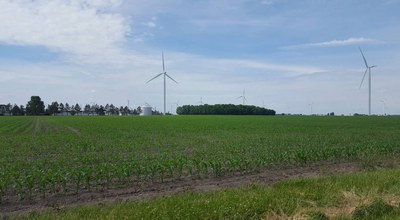
Plan your visit
Reflections on the Bicentennial Year
December 12, 2016

It has been an amazing year for Indiana. In Local History Services, it has been wonderful to hear about all of the creative programs, initiatives and projects that have been happening around the state. Historical societies, museums, libraries and communities of all sizes have been able to tap into the excitement of 200 years of Indiana statehood to foster interest in history and strengthen local ties.
For us, the bicentennial year has always been about three things: reflecting on our past, celebrating our present and looking toward the future. Because history isn’t only something that happened, 50, 100 or 200 years ago it is always in motion. History happened a week ago, a year ago and even today. All of those remarkable pieces of historical ephemera from Indiana’s centennial were once someone’s current experience. For children who participated in the celebrations this year, the Bicentennial will someday be a nostalgic memory from their youth.
So, the question is: what now? How do we keep the momentum now that the Indiana bicentennial is officially history? For one thing, we need to continue to collect images, objects and stories that reflect our ongoing history. It has been said that the current young generation is the most photographed but those photographs are the least preserved in our recent history.
During the bicentennial year, Local History Services staff took photos of communities and scenes all across Indiana while we traveled the state. The purpose of this was to create a set of images that, collectively, capture what Indiana looked like in 2016. When we took these photos, we felt a real connection to our ongoing history we always framed images with a view to what people would think when they look at them years from now. What will they think of the cars, the clothes people are wearing, the buildings as they currently stand? We hope they will be useful tools for future research and for remembering the past. The photos are now permanently a part of the Indiana Historical Society’s digital image collection and can be seen online in the Indiana at 200 collection.
It is also vital to stay connected to what is important to our communities. As history organizations, we are the memory-keepers, and we need to make sure we are preserving the things that matter most and welcoming many voices to the table. It is important to listen to our audiences and to demonstrate the importance of connections between our history and our now; to understand that things that happened in the past shaped how we live today; and that our shared history brings us together. So capture what made the Indiana bicentennial special and keep moving forward!
Additional reading and resources:
Indiana State Library’s Bicentennial Manuscript Collection
Center for the Future of Museums
In The Digital Age, The Family Photo Album Fades Away
What Should Our Museums Look Like in 2020?








